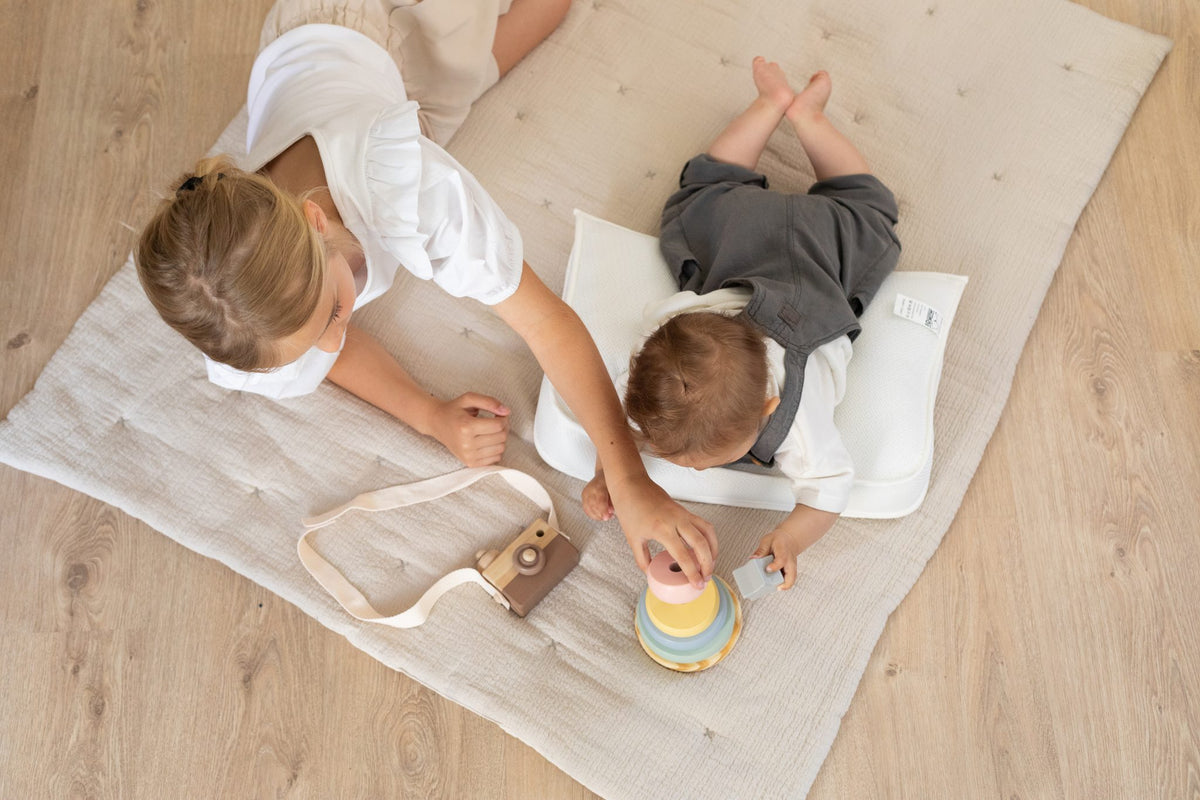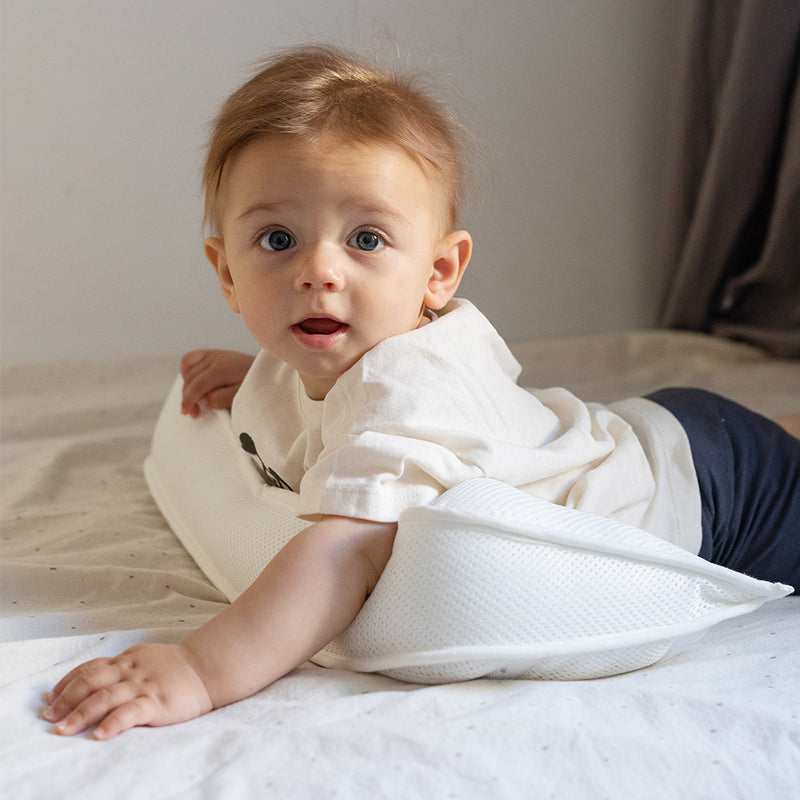WHAT IS TUMMY TIME?
Tummy Time is a method of physical activity for newborns and infants that contributes to better development of motor skills.
Practice it only when the child is awake. It consists of placing the baby in the prone position (face down) on the parent’s chest, in bed or on a comfortable surface during supervised playtime. Any type of play or position where the baby is “face down” will be beneficial both in preventing cranial deformities and in strengthening the baby’s muscular and sensory capacity. Prone position during play is not a risk factor for SIDS.

WHY IS IT IMPORTANT?
There are many advantages for young children who spend time on their tummies while awake and supervised. Spending time on the tummy promotes the baby’s motor development, head control, and upper body strength.
Another advantage is that it relieves the constant pressure on the back of the baby’s head when lying on the back. Continuous pressure on one side of the head can affect the shape of the head, for example, by flattening it.
WHEN SHOULD IT BE PRACTICED?
The earlier the baby starts spending time on the tummy, the more natural this position will be. Therefore, it is advisable that the baby gets used to being on its tummy from the beginning. For example, if the baby spends short periods on its tummy while awake as a newborn, it becomes a natural part of its daily routine. When babies are on their tummies, they learn to roll, roll, crawl and crawl on the floor. Babies with little or no tummy time tend to develop motor skills later than children who have practiced tummy time.
The Tummy Time should be practiced from the first weeks of life.
“The earlier the infant spends time on their tummy, the more natural this position will become. Therefore, it is advisable to let the infant get used to lying on its tummy right from the start. For example, the baby will spend short periods on the tummy while awake as a newborn. It then becomes a natural part of their daily routine.”
Anna Öhman PT Ph.D. Specialist in Pediatrics
Helps prevent flat spots on the back of your baby's head.


Strengthens neck and shoulder muscles so your baby can begin to sit up, crawl and walk.
Improve your baby's motor skills.

Advise 1
ON THE KNEE ON THE FLOOR
Burping your baby after feeding is an excellent opportunity to get your baby used to being on his tummy.


Advise 2
ON THE KNEE IN A CHAIR
Tummy Time on the floor in small intervals with the baby on your lap helps him/her to get used to this position.
Advise 3
TUMMY TIME WITH WATER
Water is an excellent tool to make the baby stay longer on the tummy, always practised under supervision.


Advise 4
TOGETHER WITH PARENTS
Practice Tummy Time with your baby; parents or siblings are always the best support.
TUMMY TIME WITH MIMOS PLAY
Mimos Play ® - Why?
Many parents feel that Tummy Time is a struggle; the baby does not want to spend time on its tummy, but Mimos® Play is a product that facilitates this process and aids in natural development. Mimos® Play is a product that facilitates the practice of Tummy Time and aids in correcting severe deformities with its adjustable lateral positioning. It consists of 3 pieces to adjust to the baby’s development and age; therefore, babies can use Mimos® Play from the first weeks of life until they can withstand 1 hour of Tummy Time/day without any problems.






